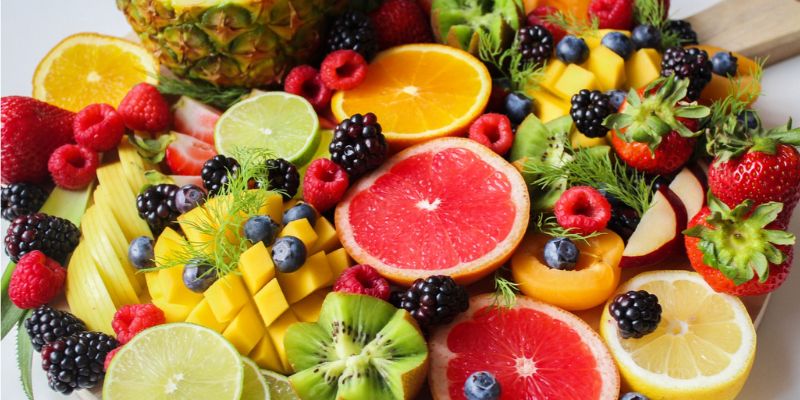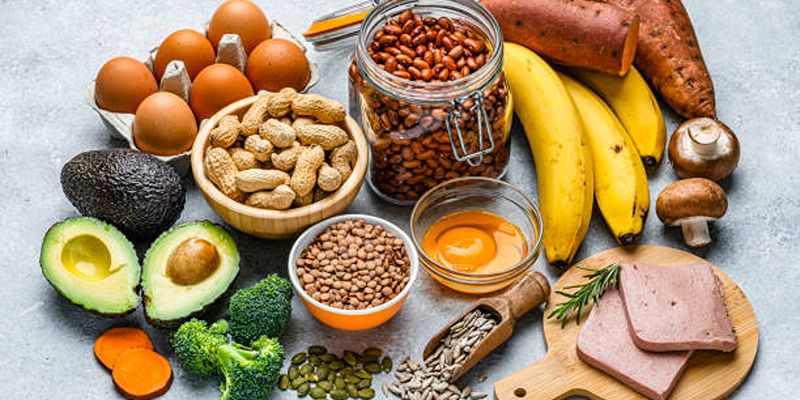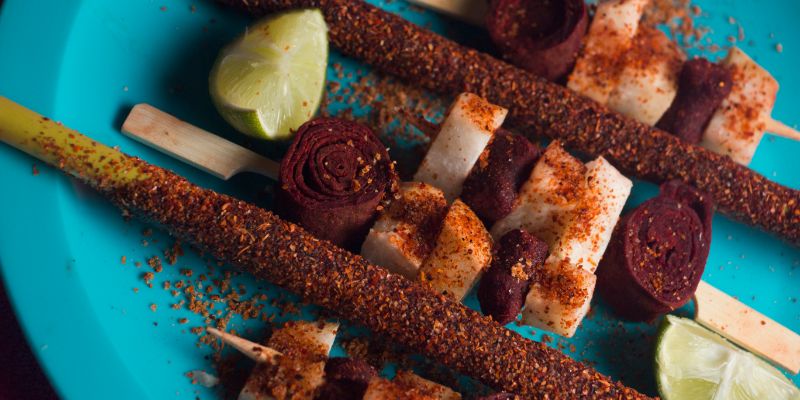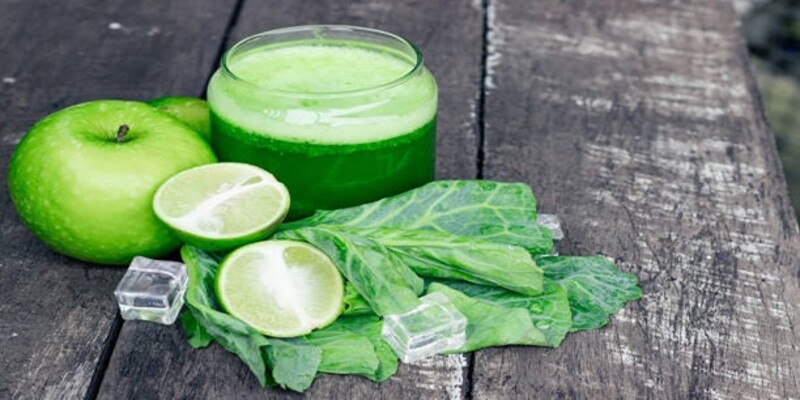Let's face it: sometimes, the urge for a salty, crunchy snack hits us all hard. You reach for the potato chips, the pretzels, maybe even those "air-fried" wonders that still leave you feeling like you inhaled a deep fryer. But then, there is jicama, the underdog root vegetable, ready to dethrone your unhealthy snacking habits and become the champion of your taste buds and your health. This article contains all the information you could want to know about Jicama.
What is Jicama: Pronunciation, Origin, and More
Jicama, pronounced "hi-kah-mah," hails from Mexico and Central America. Don't let its brown, turnip-like exterior fool you. Inside lies a crispy, white flesh with a subtle sweetness and a satisfying crunch that could give your favorite French fry a run for its money (and probably win). Unlike fries, jicama won't leave you feeling greasy and regretful. It's packed with nutrients, making it a stealthy health hero in disguise. It’s a lesser-known secret vegetable to improve your health without sacrificing flavor.
Jicama: A Nutritional Powerhouse
Calorie Light: Ditch the guilt! Jicama clocks in at only 35 calories per cup, making it a dieter's dream. Plus, it's virtually fat-free, letting you add satisfying bulk and texture to your meals without packing on the pounds.
Fiber Fiesta: Feeling full on fewer calories? Jicama boasts 6 grams of fiber per cup, keeping you satisfied and helping your digestion run smoothly. This fiber superstar also helps manage blood sugar levels and lower cholesterol, making it a triple threat to your health.
Vitamin C Champion: Ward off illness and boost your immune system with jicama! One cup provides nearly 20% of your recommended Vitamin C intake. This potent vitamin protects your cells from damage and helps your body absorb iron, making it a true champion for overall health.
Potassium Powerhouse: Keep your muscles functioning smoothly and your blood pressure checked with Jicama. This delicious root vegetable is a good source of potassium, providing around 18% of your daily needs per cup. This essential mineral is crucial in nerve signaling, ensuring your body communicates efficiently.
How to Eat and Enjoy Jicama
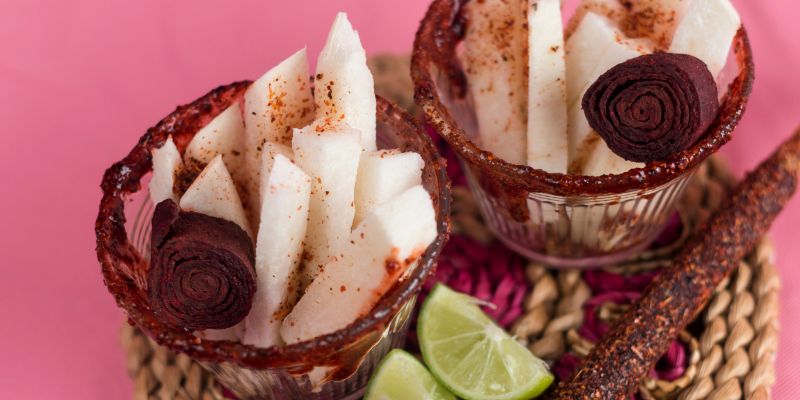
So, how can you integrate this crunchy vegetable into your diet? The possibilities are endless! Try out Jicama in the listed ways:
Slice it raw: Slice jicama into sticks for dipping in your favorite healthy dips like hummus, guacamole, or salsa. An exciting version of crudités, perfect for any party or gathering.
Salad Addition: Add shredded or diced jicama to salads for a refreshing and crunchy texture. It's like adding healthy goodness to your salad bowl!
Stir-Fry Delight: Dice jicama and add it to your stir-fries for a satisfying crunch and extra fiber boost. Sneak in extra nutrients without compromising taste!
Jicama Slaw: Shredded jicama adds a unique twist to coleslaw or other veggie slaws. It's like giving your slaw a makeover with a fun and unexpected flavor and texture!
Pickled Jicama: A tangy and flavorful snack or side dish. Like a flavor explosion in your mouth. Ideal for giving your meals a unique twist.
Fruity Fusion: Dice jicama and mix it with chopped fruits like mango, pineapple, or watermelon for a refreshing and healthy salad. A tropical party in a bowl bursting with vitamins and flavor!
Bonus Tip:
Jicama isn't just a versatile snack; it can also be enjoyed in other ways:
Jicama Noodles: Using a spiralizer, create jicama noodles for a low-carb alternative to pasta dishes.
Jicama Chips: Slice jicama thinly, bake with your favorite spices, and enjoy a healthier alternative to potato chips.
Jicama Tacos: Substitute jicama slices for tortillas for a low-carb and gluten-free taco base. Fill them with your favorite healthy fillings, like seasoned ground turkey, black beans, and vibrant salsa.
Jicama isn't just a healthy and delicious addition to your diet; it's also a versatile ingredient that can be enjoyed in countless ways. So, next time you're looking for a satisfying and guilt-free snack or a unique addition to your meals, remember the humble jicama. It may not be the most glamorous vegetable on the shelf, but it's packed with flavor, nutrients, and the potential to become your next hero in the kitchen.
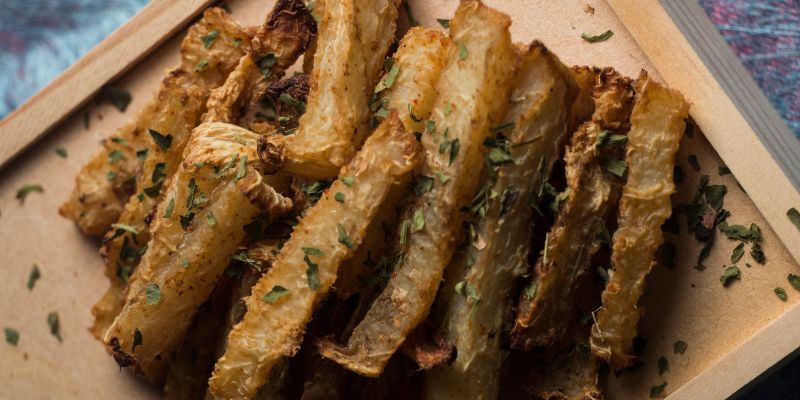
A Few Things to Keep in Mind
Before you rush out and buy a cartload of jicama, remember this important disclaimer: Although most people can safely eat jicama, it is always advisable to use caution when experimenting with new foods. Here are a few things to keep in mind:
Moderation is Key: Although jicama is low in calories, overconsumption of food is not advisable. Enjoy it as part of a balanced diet, and listen to your body's hunger cues.
Possible Allergic Reactions: Like with any novel food, be mindful of allergic reactions after consuming jicama. See a medical expert if you encounter any negative side effects.
Avoid the Leaves and Seeds: While the root of the jicama plant is edible, the leaves and seeds are considered toxic and should be avoided at all costs.
Conclusion
Jicama offers a unique combination of refreshing crunch, impressive nutritional value, and potential health benefits. Whether you enjoy it raw, cooked, or pickled, jicama can add a delicious and healthy twist to your meals. Be mindful of moderation and speak with your physician if you have concerns about incorporating jicama into your diet. With some knowledge and caution, you can safely enjoy the many benefits of jicama and unlock its culinary potential. So try this crunchy root vegetable and discover a new favorite addition to your healthy eating journey!
Frequently Asked Questions:
- How do I choose a good jicama?Look for a jicama that feels firm and heavy for its size. The skin should be smooth and free of blemishes or bruises. Avoid jicama with soft spots or wrinkles, which indicate overripeness or potential damage.
- How do I store jicama?Store whole, unpeeled jicama in a cool, dry place like your pantry for 2-3 weeks. Once cut, store jicama in an airtight container in the refrigerator for up to 3-5 days.
- What does jicama taste like?Jicama has a unique flavor profile, combining mild sweetness and slight nuttiness. Some people compare it to the taste of water chestnuts, while others describe it as a cross between a potato and an apple. The flavor is subtle yet refreshing, making it a versatile ingredient for various dishes.
